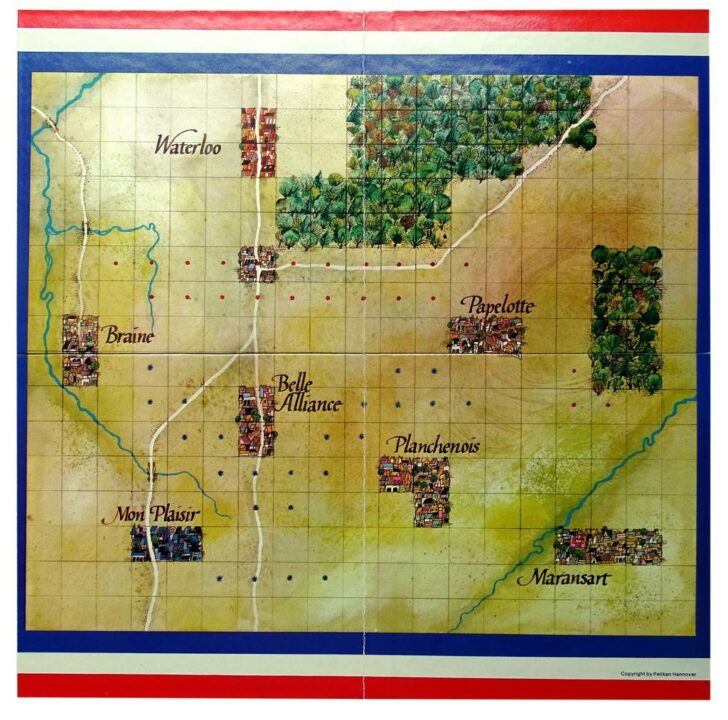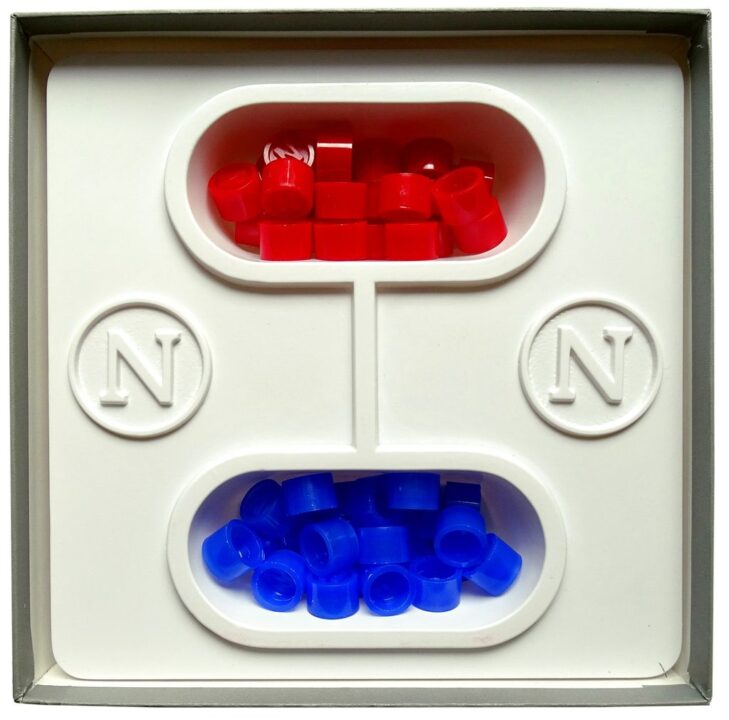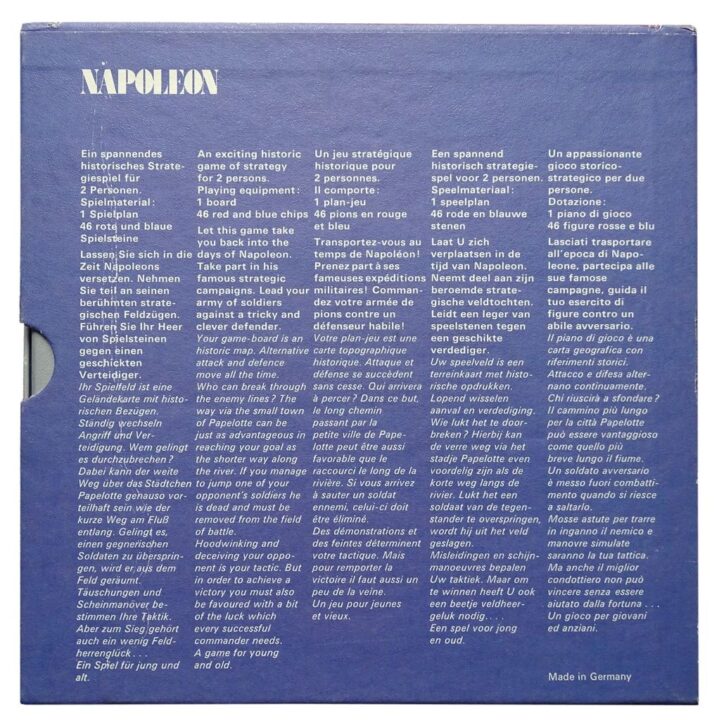If you ever wanted to outwit your friends, march troops across Europe, and maybe even shout about biscuits in fake French accents, you’re in the right place. This is my review of the board game Napoleon, a game that promises grand strategy, sneaky moves, and a healthy dose of table drama. After roping in my pals for a few nights of plotting and rolling dice, I’ve got a lot to say—so let’s get to the real talk on whether Napoleon deserves a spot on your shelf!
How It Plays
Setting Up
Lay out the huge map of Europe. Pop out your armies—one side takes France, the other gets the Allies. Place your troops in their starting cities. Shuffle the card decks and keep the dice close. Stack snacks somewhere safe (trust me, you’ll be here a while).
Gameplay
Players take turns moving armies and trying to outsmart the enemy. You can attack, defend, and even pull off some sneaky flanking moves. Use cards for extra tricks and grimace as the dice decide your battle fate. It’s all about clever moves, bold risk, and not falling asleep while someone ponders their entire life on their turn.
Winning the Game
To win, Napoleon just needs to capture enough key cities before the Allies unite and crush him. If the Allies hold on long enough or take out the French, they win. It’s tense to the end—unless you get trounced in the first two rounds, which is, uh, unpleasantly possible.
Want to know more? Read our extensive strategy guide for Napoleon.
How Napoleon Keeps the Battlefield Fair (Or at Least Tries To)
Let me tell you, the first time we set up Napoleon on my mate Alex’s table, I thought, “Great, here’s a game where I’ll lose everything to dice.” To my pleasant surprise, Napoleon does a pretty okay job balancing skill and luck. Now, don’t get too excited—there are still dice. But there’s also a hearty chunk of strategy that will roast your brain harder than my mum’s Sunday potatoes.
Each player takes on either the French or the Allied forces. You move armies, plan marches, and try to outwit opponents like a leftover from history class—but way more fun (and with much less napping). What stands out in Napoleon is its command system. It forces you to plan ahead, because not every unit follows orders like they should, just like my friend Jerry after a few pints. The fog-of-war element, where you don’t know exactly what your enemy’s up to, kept us guessing all night and made me feel a bit like a military genius (or a fool, but that’s part of the fun).
Still, there are moments where luck plays a bigger hand than I’d like. A few bad rolls and your whole flank could be toast. If you’re not into games where your fate can sometimes hang on chance, take my advice and brace yourself. Strategic players get rewarded, but not always enough. The balance isn’t perfect, but at least it doesn’t toss all your plans in the bin every turn.
Next up: if you think tactical maps are thrilling, just wait until you hear how Napoleon brings history to life (or at least gives it a nice hat).

Taking a Trip Back in Time with Napoleon
I’ll admit, I’m a sucker for history. When I cracked open Napoleon for the first time, I nearly put on a bicorne hat and practiced saying, “Oui, oui!” The game pulls you straight into the muddy boots of 19th-century warfare. From the moment you see the board, you know you’re marching with the big man himself. The map is dotted with little towns and rivers, and the way the game shows troop movement really makes you feel like you’re trying to outsmart some real generals, not just your friend Steve who once thought Waterloo was a kind of cheese.
What really helps the immersion is how the game bakes in the drama of Napoleon’s campaigns. You’re not just pushing pawns on a pretty map. You’re reliving the cat-and-mouse tension of the actual battles. There’s a real sense of, “Can I actually pull off a Napoleon-level maneuver?” Spoiler: I absolutely could not—unless my plan was to retreat heroically at every opportunity. Plus, the rules sprinkle in little historical facts here and there, which is great if you like trivia or pretending you’re smarter than you are.
Sure, you need to bring a bit of imagination, but the game helps with its theme and fun touches that capture the spirit of the era without feeling like you’re reading a textbook. My group found ourselves quoting movie lines and arguing in fake French accents after a while. That says a lot! All in all, if you want to feel like you’re at the heart of Napoleon’s world, this game does the job.
Hold onto your shakos and bayonets—next up, I’ll be talking about how the pieces look and feel in Component quality and design!

Napoleon Board Game: A Solid Look at Component Quality and Design
If you ever wanted to push tiny armies around Europe while your cat tries to eat the dice, Napoleon delivers. First up, the box. It’s sturdy, and while my friend Steve tried to sit on it (don’t ask), it survived. That’s a win in my book. Inside, you’ll spot a game board that’s both detailed and clear, showing maps that could make even your least-geography-savvy brother feel like a tactical genius.
The miniatures are another highlight. They’re chunky enough not to snap in your hands, but not so big that they threaten to invade your kitchen table. Sure, they’re not hand-painted masterpieces, but they’re distinct and do the job. The cards use thick stock, resisting the orange soda spill that doomed my last copy of Monopoly. The dice? Well, they’re not going to win any beauty contests, but they roll fine, and at least nobody has tried to eat them yet.
Artwork leans classic, with plenty of uniforms, maps, and historical touches. While some might say it’s a bit old-school, I think it matches Napoleon’s vibe. My only gripe—sometimes the color choices for opposing armies blend just a little if the lighting’s weird. Nothing a small flashlight can’t fix. All told, it looks and feels like a game made for history buffs who occasionally use their board as a coaster.
Next up, let’s see if the player interaction and strategy depth make us feel like true generals or just lucky dice rollers with too much coffee!

Player Schemes and Sneaky Strategy in Napoleon
If you like a game where your friends will try to mess up your best moves, Napoleon gives you plenty of action. In our game night, no one sat quietly planning in a corner. Every turn, someone would stare me down across the table as they pushed their troops into a region I thought was safe. Trust? Ha! There is no trust in Napoleon, only brilliant betrayal and very loud sighs.
The game rewards players who can think two or three moves ahead. I tried going all-in on an aggressive march to Paris. My friend Lisa, with her classic poker face, had actually set me up for a classic pincer move. Embarrassing. But honestly, that’s what makes Napoleon fun: even if your plans flop, you learn fast and get hungry to outsmart your rivals next round.
Unlike games where you roll dice and hope for the best, Napoleon has enough depth for big brains, but doesn’t drag for hours. The open map and movement rules mean you can try sneaky flanking, hit-and-run, or go full turtle defense. Everyone stays involved, because the balance of power shifts fast and often. So, you can’t just check out and let someone else win. (Unless you want to be the historical equivalent of a fainting goat.)
So, do I recommend Napoleon? Yes—if you like outwitting your pals, cackling like a villain, and getting payback every few turns. It rewards thinkers and schemers. Bonaparte would approve.
Conclusion
If you want a game that lets you plot, bluff, and yell at your friends (all in a nice historical package), Napoleon is a winner. The balance between strategy and luck isn’t perfect—beware those dice!—but the deep tactics and wheeling-dealing more than make up for it. The sturdy bits and classic look are a sweet bonus. Just watch out for long games and that one pal who always roleplays Napoleon a little too hard. All in all, Napoleon is a great pick for folks who like brains over blind luck. That wraps up my review—may your plans never get Waterloo’d!


